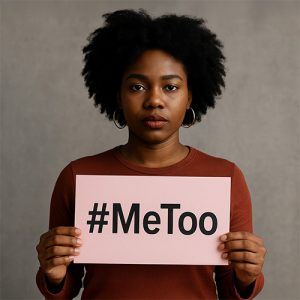A comparative overview of the UK and Kenya
Sexual harassment continues to shape the realities of many workplaces in 2025, often in ways that are difficult to detect or address. While updated data for this year is still emerging, recent studies highlight the persistence of the issue—particularly in the United Kingdom and Kenya. Alongside the personal impact, the organisational and financial consequences are becoming more visible.
United Kingdom: Ongoing Challenges
In the UK, sexual harassment remains a common workplace experience. A report by the Fawcett Society found that at least 40% of women encounter some form of harassment over the course of their careers, ranging from unwanted comments and advances to more sustained patterns of exclusion or intimidation (Fawcett Society, 2022). Disabled individuals and those from minoritised ethnic backgrounds often experience a disproportionate burden.
The Office for National Statistics estimated that 8% of women aged 16 and over experienced workplace sexual harassment within the past year (ONS, 2023). Although less frequently reported, men are also affected—though they may be less likely to speak out.
Organisational Impact
The implications extend beyond individual wellbeing. Employers have faced increasing scrutiny and material risk.
In late 2024, current and former GMB staff and members announced plans to file a complaint with the Equality and Human Rights Commission, alleging that the union failed to adequately investigate claims of sexual harassment and bullying (The Guardian, 2024).
The Confederation of British Industry (CBI) also faced continued fallout from previous misconduct allegations. Reports in 2024 revealed the CBI’s use of non-disclosure agreements (NDAs) to prevent staff from discussing their experiences of harassment and bullying. These agreements were accompanied by financial settlements estimated at over £1 million (The Guardian, 2024).
Recent legal analyses suggest that defending a sexual harassment case before an Employment Tribunal may cost upwards of £10,000 in solicitor’s fees alone, not including settlement costs or reputational harm.
Kenya: High Incidence, Low Reporting
In Kenya, available data points to high rates of workplace harassment alongside persistently low levels of reporting. A 2023 study by the University of London found that nearly 80% of women surveyed had experienced harassment at work, with 40% facing it repeatedly. Many cited fear of retaliation and a lack of trust in complaint systems as reasons for not coming forward.
A Knightwise Human Capital survey from 2022 echoed these findings: 86% of respondents who had experienced harassment did not report it, and among those who did, most felt their concerns were not addressed adequately (Knightwise Human Capital, 2022).
Legal Developments
Recent Kenyan court rulings suggest a shift in how workplace harassment is being addressed through legal channels.
In CMK v Chandarana Supermarket [2024] eKLR, the Employment and Labour Relations Court awarded damages for both sexual harassment and constructive dismissal after the employer failed to act (Kenya Law, 2024).
In Cathie Akinyi Nana v Chandarana Supermarket [2020] eKLR, the Court of Appeal upheld a KES 1 million award following the dismissal of an employee who had raised harassment concerns.
These rulings signal that courts are increasingly attentive to employers’ responsibilities.
Responding
While national contexts differ, a consistent picture emerges: experiences of harassment remain underreported, institutional protections are often insufficient, and failure to respond effectively carries material and reputational consequences.
Organisations seeking to respond more meaningfully may consider:
- Reviewing and clearly communicating anti-harassment policies
- Strengthening internal systems for reporting and follow-up
- Supporting impartial investigations
- Delivering training on respectful conduct and culture
- Fostering transparency, trust, and organisational accountability
Sexual harassment is not confined to one geography, profession, or sector. As accountability mechanisms evolve, so too does the understanding that addressing workplace harm is both a legal responsibility and an organisational imperative.
References
- Fawcett Society (2022). The Broken System: Women’s Experiences of Workplace Harassment. https://www.fawcettsociety.org.uk
- Office for National Statistics (2023). Sexual Harassment in the Workplace: Estimates by Gender and Age. https://www.ons.gov.uk
- Mason, R. (2024). ‘GMB staff and members to complain to equalities watchdog’. The Guardian, 27 Nov. Link
- Isaac, A. (2024). ‘CBI uses gagging clauses to prevent discussion of sexual misconduct’. The Guardian, 26 Mar. Link
- Harper James Solicitors (2025). The Cost of Employment Tribunals. https://harperjames.co.uk/article/cost-of-employment-tribunals-for-employers
- Culture Shift (2024). The Cost of Sexual Harassment at Work. https://www.culture-shift.co.uk
- University of London (2023). Workplace Sexual Harassment in Kenya. Internal report.
- Knightwise Human Capital (2022). Kenya Workplace Harassment Survey. https://www.knightwise.com
- Kenya Law (2024). CMK v Chandarana Supermarket [2024] eKLR. https://kenyalaw.org/caselaw/cases/view/267210
- Business & Human Rights Resource Centre (2019). Cathie Akinyi Nana v Chandarana Supermarket. https://www.business-humanrights.org










